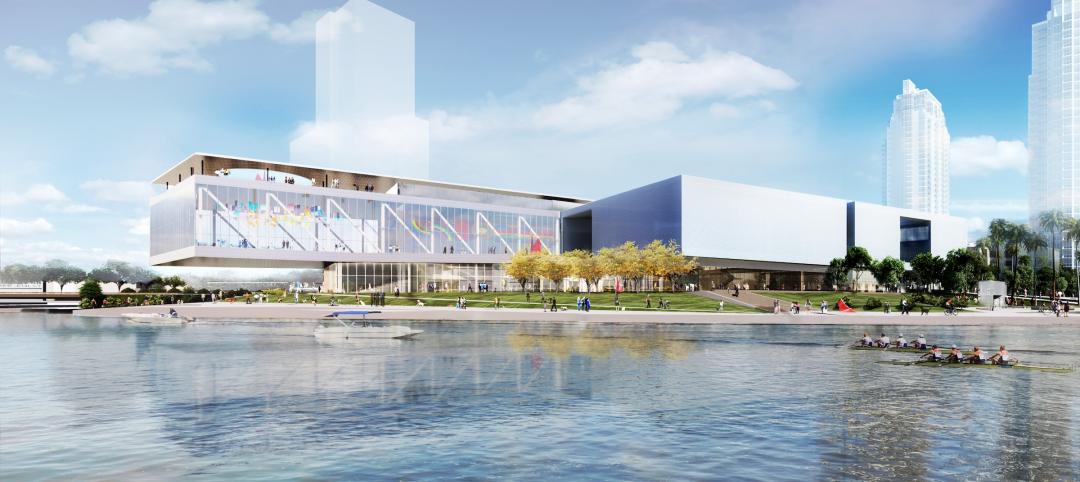The industry’s old-school ways mean contractors waste time and money mailing revisions to blueprints, tracking paper receipts and invoices, or traveling long distances to do on-site inspections of small changes.
95% of construction and engineering professionals think tech/innovation will significantly change their business2.
As construction professionals shoulder even more pressure to boost razor-thin profit margins, leaders are beginning to embrace the digital revolution. Fifty-five percent of construction and engineering professionals said their industry is ripe for disruption in a 2017 global survey conducted by KPMG; 95% think technology/innovation will significantly change their business; and 74% believe such a change will happen in less than five years2.
Digital disruption doesn’t have to be a burden. Here are three ways to harness digital tools to your advantage.

Manage Projects From Anywhere
Hard drives and technology are more visible than ever on the job site. Crews are now using tablets, for example, to review and inspect plans instead of old-fashioned paper blueprints. Some new applications help managers inspect remote sites by providing digital photos.
In addition, project management software can save time and increase transparency by ensuring that updates, revisions and plan changes are shared in real time, cutting down on errors and delays.

Manage Jobs Better On-Site
Increasingly, on-site job leaders are using tech to monitor and improve operations in real-time.
New mobile platforms allow foremen to update blueprints immediately on-site, instead of having to make the trip back to the office. Workers can annotate and track punch lists from the construction zone, letting them work nimbly in the field when inevitable changes on-site arise.
New mobile platforms allow foremen to update blueprints immediately on-site, instead of having to make the trip back to the office.
Being able to adjust or change plans in real-time reduces or eliminates the time-delay that can be a killer on projects. Some digital tools allow foremen to immediately retrieve and compare data on actual project hours, budgeted hours, and remaining hours, which helps keep projects on or close to budget.
Harry, a VP of Operations at a midsize construction firm, said the way that work gets done is definitely changing. “There's not too many contractors that don't have somebody that’s schooled in software,” he said. “Most of them have gotten smart enough to know that that helps.”

Track Expenses, Everywhere, Digitally
Having centralized expense control enables the home office to get a birds-eye view of all the project expenses — even those out-of-state.
Owners of mid-size construction firms say that it helps control expenses when their out-of-state workers are aware that their spending is being reviewed regularly.
Jake, the owner and operations manager for a construction firm that does about $25 million in annual sales on projects in multiple states, said, “We want our guys that are out of state to be aware that we're reviewing what they’re spending.”
Turning to the latest digital solutions helps construction leaders quickly and easily tabulate expenses and other various needs for projects. Additionally, by avoiding paper, expenses don’t fall through the cracks and pile up without your knowledge.
Custom business Credit Card programs allow firms to digitize their invoices, track expenditures and automate payments through online dashboards.
“We know ahead of time what our costs are going to be,” said Robert, president of a mid-sized construction firm. “We break up those costs, allowing our field personnel to make purchases for specific projects, up to a certain amount.”
Custom business Credit Card programs allow firms to digitize their invoices, track expenditures and automate payments through online dashboards.
“When we were looking around, I asked a couple of friends what they were doing as far as controlling their expenses and what they thought was the best way to go,” Robert said. “Most of them are using a combination of corporate cards and online financial management tools to manage their cash flow.”
Related Stories
Building Materials | Aug 19, 2024
Federal 'buy clean' construction materials label program unveiled
The U.S. Environmental Protection Agency announced a plan for implementing a new label program to boost American production of more climate-friendly construction materials and products. The label program will prioritize steel, glass, asphalt and concrete.
Museums | Aug 19, 2024
The Tampa Museum of Art will soon undergo a $110 million expansion
In Tampa, Fla., the Tampa Museum of Art will soon undergo a 77,904-sf Centennial Expansion project. The museum plans to reach its $110 million fundraising goal by late 2024 or early 2025 and then break ground. Designed by Weiss/Manfredi, and with construction manager The Beck Group, the expansion will redefine the museum’s surrounding site.
Reconstruction & Renovation | Aug 19, 2024
Movement to protect historic buildings raises sharp criticism
While the movement to preserve historic buildings has widespread support, it also has some sharp critics with well-funded opposition groups springing up in recent years. Some opponents are linked to the Stand Together Foundation, founded and bankrolled by the Koch family’s conservative philanthropic organization, according to a column in Governing magazine.
Government Buildings | Aug 19, 2024
GSA posts new RFI for enabling energy efficiency, decarbonization in commercial buildings
The U.S. General Services Administration (GSA), in collaboration with the U.S. Department of Energy, recently released a new Request For Information (RFI) focused on enabling energy efficiency and decarbonization in commercial buildings. GSA wants to test innovative technologies through GSA’s Center for Emerging Building Technologies.
MFPRO+ New Projects | Aug 16, 2024
At 60 stories, the Paramount multifamily development will stand as Nashville’s tallest high rise
When complete, the 60-story Paramount building, at 750 feet high, will be the tallest high rise tower in Nashville, Tenn., surpassing the city’s current record holder, the 617-foot AT&T Building. The $390 million Paramount project recently launched condo sales after securing more than $230 million in construction financing.
Urban Planning | Aug 15, 2024
New York City begins first large-scale porous pavement installation
New York City is installing its first large-scale porous pavement installation along seven miles of roadway in Brooklyn. The project will keep 35 million gallons of stormwater out of the combined sewer system each year, according to a news release.
Curtain Wall | Aug 15, 2024
7 steps to investigating curtain wall leaks
It is common for significant curtain wall leakage to involve multiple variables. Therefore, a comprehensive multi-faceted investigation is required to determine the origin of leakage, according to building enclosure consultants Richard Aeck and John A. Rudisill with Rimkus.
MFPRO+ News | Aug 14, 2024
Report outlines how Atlanta can collaborate with private sector to spur more housing construction
A report by an Urban Land Institute’s Advisory Services panel, commissioned by the city’s housing authority, Atlanta Housing (AH), offered ways the city could collaborate with developers to spur more housing construction.
Adaptive Reuse | Aug 14, 2024
KPF unveils design for repositioning of Norman Foster’s 8 Canada Square tower in London
8 Canada Square, a Norman Foster-designed office building that’s currently the global headquarters of HSBC Holdings, will have large sections of its façade removed to create landscaped terraces. The project, designed by KPF, will be the world’s largest transformation of an office tower into a sustainable mixed-use building.
Sustainability | Aug 14, 2024
World’s first TRUE Zero Waste for Construction-certified public project delivered in Calif.
The Contra Costa County Administration Building in Martinez, Calif., is the world’s first public project to achieve the zero-waste-focused TRUE Gold certification for construction. The TRUE Certification for Construction program, administered by Green Business Certification Inc. (GBCI), recognizes projects that achieve exceptional levels of waste reduction, reuse, and recycling.

















